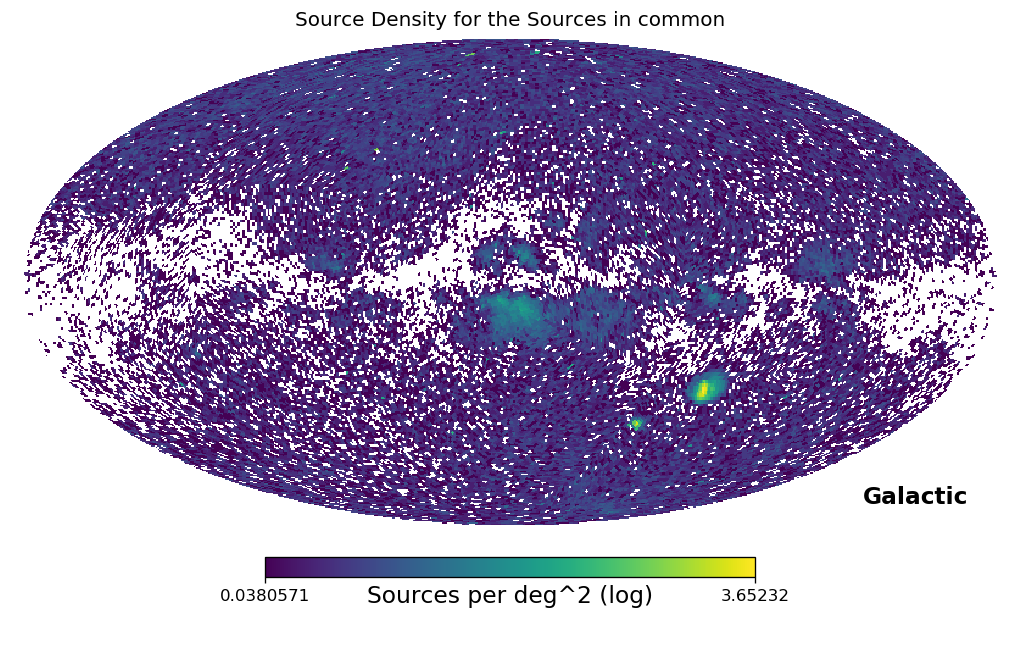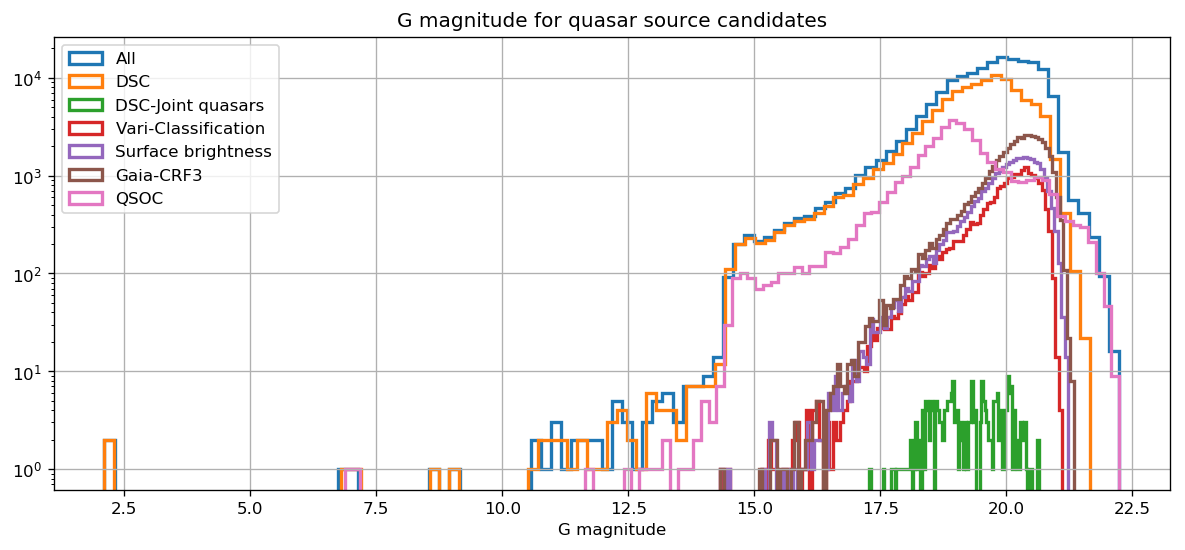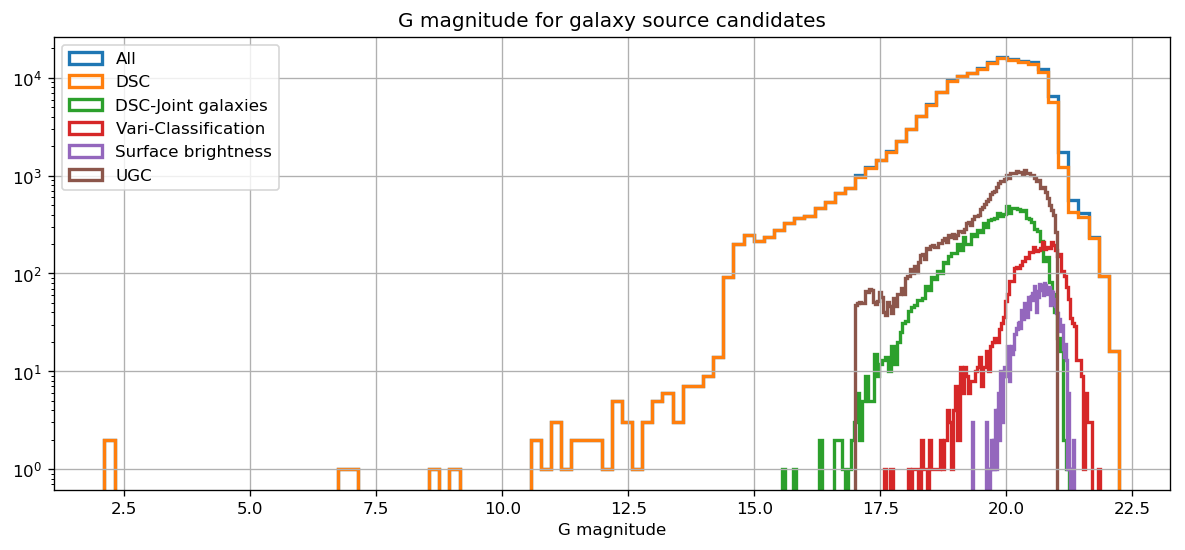12.3.8 Sources in common between the two extragalactic tables
It should be noted that certain sources are present in both integrated extragalactic tables. A total of 174 146 sources fall in that category. Figure 12.21 shows their source density distribution on the sky. Figure 12.22 shows, for each table, the magnitude distribution of these sources, indicating the contribution of each module.



The distribution of their classes for the DSC (Combmod class label), Vari-Classification and OA classifiers respectively is as follows:
-
•
DSC (174 146 sources in total from this module in the common sample): 156 970 as ‘galaxy’, 12 933 as ‘quasar’. The rest is spread over the remaining classes.
-
•
Vari-Classification (27 058 sources in total from this module in the common sample): 20 845 as ‘AGN’, 4688 as ‘GALAXY’, 766 as Eclipsing Binary, 363 as RR Lyrae. The rest is spread over the remaining classes.
-
•
OA (105 463 sources in total from this module in the common sample): 46 773 as ‘QSO’, 48 097 as ‘GALAXY’. The rest is spread over the remaining classes.
As can be seen, the majority of the sources in common in the two tables are labelled as ’galaxy’ according to DSC.
Finally, almost half (28 688) of all sources reported as having a detected host galaxy are present in the sample of sources common to the two tables. This is 92% of all sources from the Surface brightness module being present in this common sample. All in all we suggest that the extragalactic sources in common between the two tables are mostly galaxies, even if a large fraction probably has an active nucleus. Stellar contaminants are also expected, especially in the regions with clear over-density in the sky distribution.